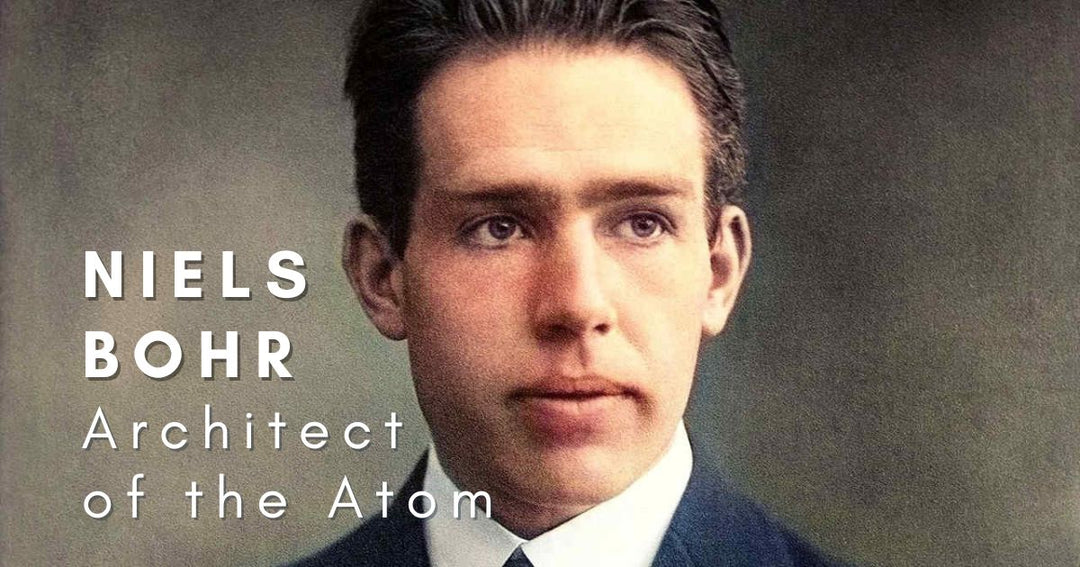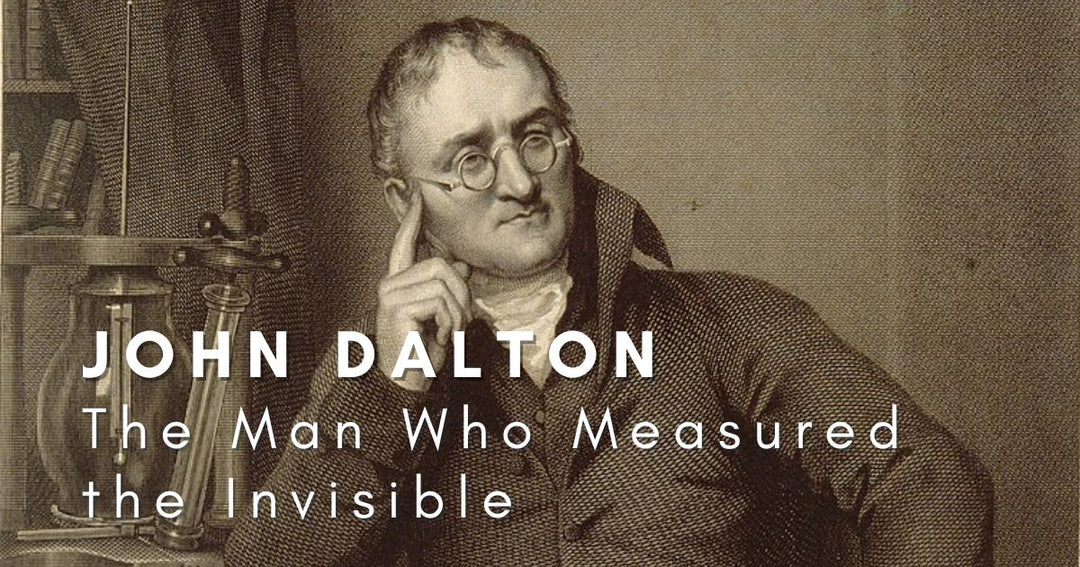John Dalton: The Man Who Measured the Invisible
John Dalton was born on September 6, 1766, in the rural village of Eaglesfield, in England’s Lake District. His family were devout Quakers - members of a religious group that valued simplicity, education, and inner light over worldly titles or wealth. Life in 18th-century Cumberia was modest, and from the beginning, Dalton’s world was defined by discipline, self-reliance, and curiosity.
Dalton attended a Quaker school in Pardshaw Hall, where he quickly stood out for his ability in mathematics and natural philosophy. By age 12, he was already helping teach at the school. By 15, he was running one.
But Dalton's interests reached far beyond the classroom.

Dalton never attended university - his religion excluded him from England’s major institutions like Oxford and Cambridge, which barred non-Anglicans at the time. But he didn’t wait for permission to pursue science. At 26, he moved to Manchester and joined the Manchester Literary and Philosophical Society - a key moment that would transform his quiet study into lasting scientific influence. Though he remained deeply self-taught, Dalton quickly gained a reputation for sharp, methodical reasoning.
In 1793, Dalton published his first major work: Meteorological Observations and Essays. It included bold theories on evaporation, vapor pressure, and heat - all based on his own instruments and careful logs. It earned him a modest reputation.
But more importantly, it hinted at what was to come.
In 1803, Dalton proposed a revolutionary idea: that all matter is made up of tiny, indivisible particles called atoms - each element composed of its own kind of atom, with a characteristic weight. This was not a new concept. The ancient Greeks had speculated about atoms, but Dalton did something no one else had: he gave atoms weight.
And that changed everything.

His atomic theory, published formally in A New System of Chemical Philosophy (1808), outlined several key postulates: that elements are made of atoms, atoms of a given element are identical, and chemical reactions involve rearrangements of these atoms. He backed his claims with precise data - assigning relative atomic weights and using symbols to represent elements and compounds.
It was the beginning of modern chemistry.
Dalton’s system offered a coherent explanation for the laws of chemical combination - particularly the Law of Multiple Proportions, which he had first articulated. Though some of his atomic weights were inaccurate (largely due to limited instrumentation), his methodology laid the groundwork for later atomic models and the periodic table.
But Dalton's curiosity wasn’t limited to chemistry.

Dalton, mistaking blue stockings for red when buying a gift for his mother led him to study his own colour vision deficiency. In 1794, he presented the first scientific paper on colour blindness - then unknown and unnamed. He even requested his own eye be dissected after death in hopes of allowing the scientific community to understand the defect. Today, colour blindness is still sometimes called Daltonism in his honour.
And like many great minds, he had his quirks.
Dalton lived simply and methodically. He kept obsessive records - tracking daily weather data for over 57 years amssing over 200,000 observations. He was famously blunt, uninterested in wealth or titles, and remained a bachelor all his life. Though elected to the Royal Society and awarded honors, he preferred his quiet laboratory in Manchester to London’s scientific elite.

As one of the most pre-eminent scientists of his age, by his later years Dalton had become a public figure of national importance. He died in 1844, aged 77 with over 40,000 people lining the streets pf Manchester for his funeral procession. Contemporary reports at the time read :
" Along the way the bells of nearly every church it passed were tolling. The recommendation of the mayor was observed and warehouses, shops and other places of business along the route were closed, their windows being filled with women in mourning. The roofs of the houses, too, were occupied by observers; never had so general a wearing of mourning been seen in the community".
In a world before atoms were seen, split, or smashed, Dalton had made them real - through reason, numbers, and sheer persistence.
And chemistry has never been the same since.







Leave a comment